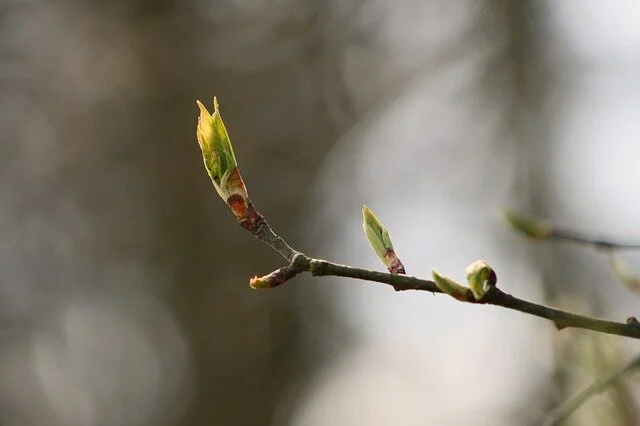“This is miserable,” the people around me say, plucking the fabric of their shirts away from their chests.
They’re sweaty and cranky, so I go silent. I can’t lie; I love this heat wave. The peer pressure to complain runs strong, though. Like in high school when my friends griped about diagramming sentences in English class.
“This is stupid,” they’d say on their way to the chalkboard, whispering so Miss Helgeson couldn’t hear them.
To fit in, I nodded. But I loved dissecting those sentences so much I thought my heart might explode. I even pictured one day sitting in heaven—in a coffee shop in the heart of the celestial city—drawing horizontal, vertical, and diagonal lines on paper, identifying groups of words and bringing them structure at last for all of eternity.
Husband walks to the thermostat now and clicks it lower by a degree or two, and I remember I’m writing about temperature and not grammar.
Living in Minnesota, I’m chilled for seven months out of every year and continually scheming ways to warm myself amongst family members who like it brisk. If I were a single lady, I’d pass on the air conditioning altogether, but here I am doing life with this overheated group.
Husband proposes traveling to Iceland sometime and staying in an ice hotel there. I read about the novelty accommodations. Architects and designers have made sleeping on blocks of ice inviting. They’ve even created amenities like frosty cocktail bars and ice-molded dinnerware to add to the adventure. I shiver and close out the tab on my online search.
I saw a YouTube video once about why summer is “women’s winter.” In the skit, the women at the office wear furs and still freeze, their lips bluer than their skin, while the men lounge in front of their computers in shorts and tank tops while tossing around a beach ball. One commenter says, “I never truly understood this sketch. Then I visited America. Now I understand.” Yes, in this country the women stow space heaters under their desks in July.
I recall bundling up to go sledding with the kids one winter. My many layers turned me into an immobile sausage. With that memory in mind, I say to one of my girls, “There’s only so much clothing you can put on, but to cool down, you can always take off more.”
She snaps her gaze at me. “I think the real expression is just the opposite.”
I recollect my Norse Mythology class in college and the knowledge that Hel—the underworld for the ignoble dead—is located in Niflheim, a realm of primordial ice and cold. To imagine hell is freezing tells me much about the ancient Scandinavian peoples and what they found insufferable. Enough said.
The forecast promises a high of 99 today (with a heat advisory), up from yesterday’s 95 degrees. Whether it was President Truman who said it first or not, the quote is true: If you can’t stand the heat, get out of the kitchen.
To twist this adage for my purposes, I’ll say this much: The lawn chair in the “kitchen” is calling me right now, and I’m heading out there with my iced coffee ASAP. You’re welcome to join me, if you can stand it.
This central air is too much.
*Names in this blog have been changed to protect my family and friends in the neighborhood, and in a nod of appreciation to the beloved Swedish author Maj Lindman, I’ve renamed my three blondies Flicka, Ricka, and Dicka.














